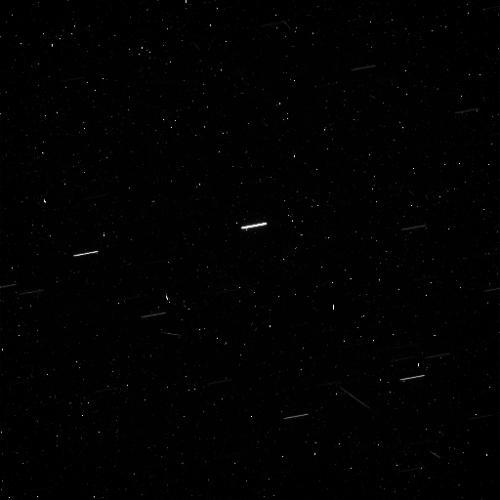Mundilfari

Mundilfari was discovered in 2000 by Brett J. Gladman, John J. Kavelaars, Jean-Marc Petit, Hans Scholl, Matthew J. Holman, Brian G. Marsden, Phillip D. Nicholson, and Joseph A. Burns using the 3.6-m Canada-France-Hawaii reflector on Mauna Kea in Hawaii, with adaptive optics. They discovered seven other Saturnian moons at the same time: Tarvos, Ijiraq, Thrymr, Skathi, Siarnaq, Erriapus, and Suttungr.
Mundilfari has a mean radius of 2.2 miles (3.5 kilometers), assuming an albedo (a measure of how reflective the surface is) of 0.06. It orbits Saturn at an inclination of about 169 degrees and an eccentricity of about 0.2. At a mean distance of 11.6 million miles (18.7 million kilometers) from Saturn, the moon takes about 953 Earth days to complete one orbit.
Mundilfari is a member of the Norse group of moons. These "irregular" moons have retrograde orbits around Saturn -- traveling around in the opposite direction from the planet's rotation. Mundilfari and the other Norse moons also have eccentric orbits, meaning they are more elongated than circular.
Like Saturn's other irregular moons, Mundilfari is thought to be an object that was captured by Saturn's gravity, rather than having accreted from the dusty disk that surrounded the newly formed planet as the regular moons are thought to have done.
Originally called S/2000 S9, Mundilfari was named for the father of two beautiful children in Norse mythology, a son whom he named "Moon" and a daughter whom he named "Sun." The gods were angered at what they considered his arrogance, so they placed the children in the sky and made the daughter drive the chariot of the sun and the son drive the chariot of the Moon. Each is chased by a wolf who is destined to catch and devour them at the doomsday time known as Ragnarok




